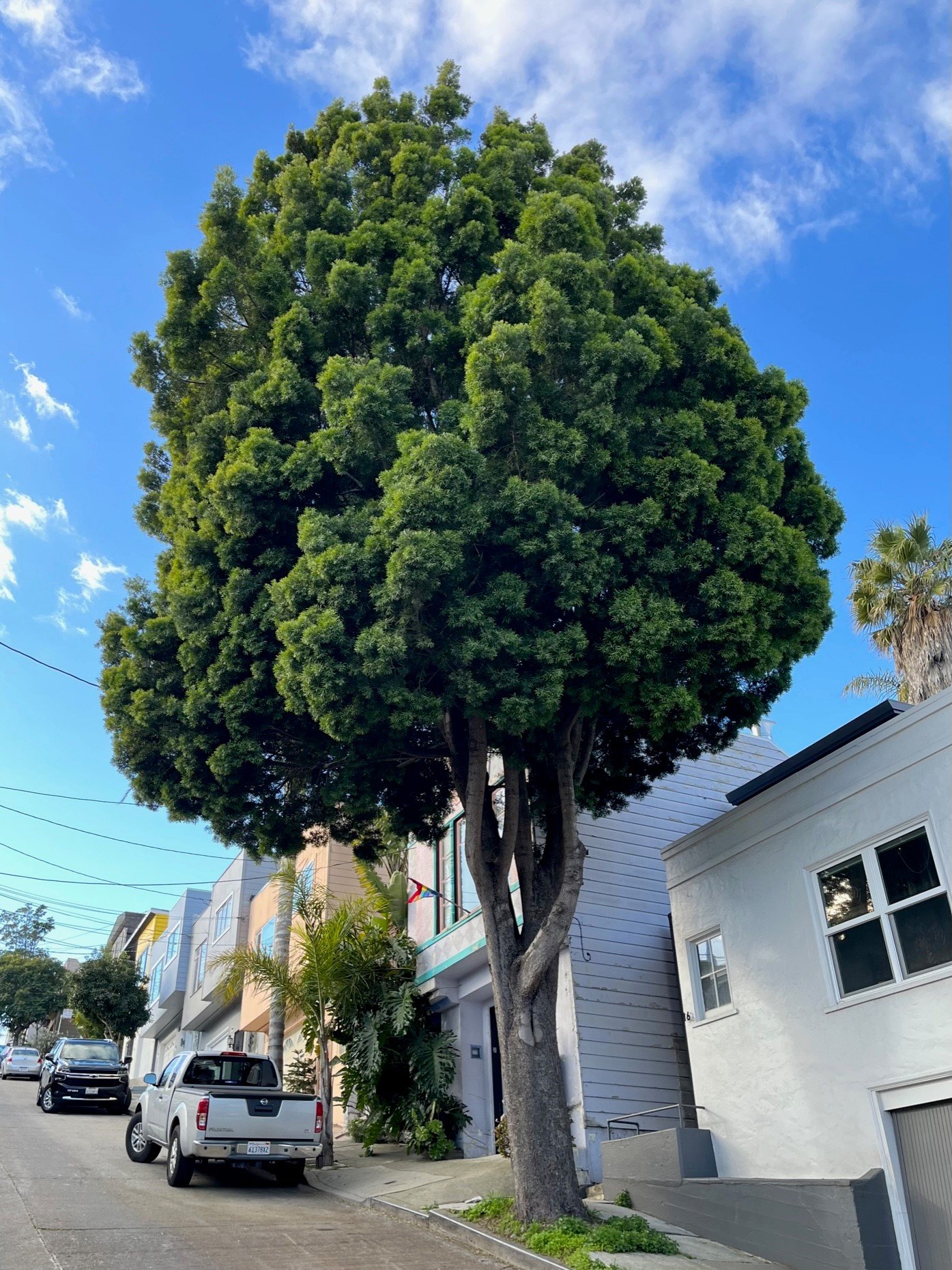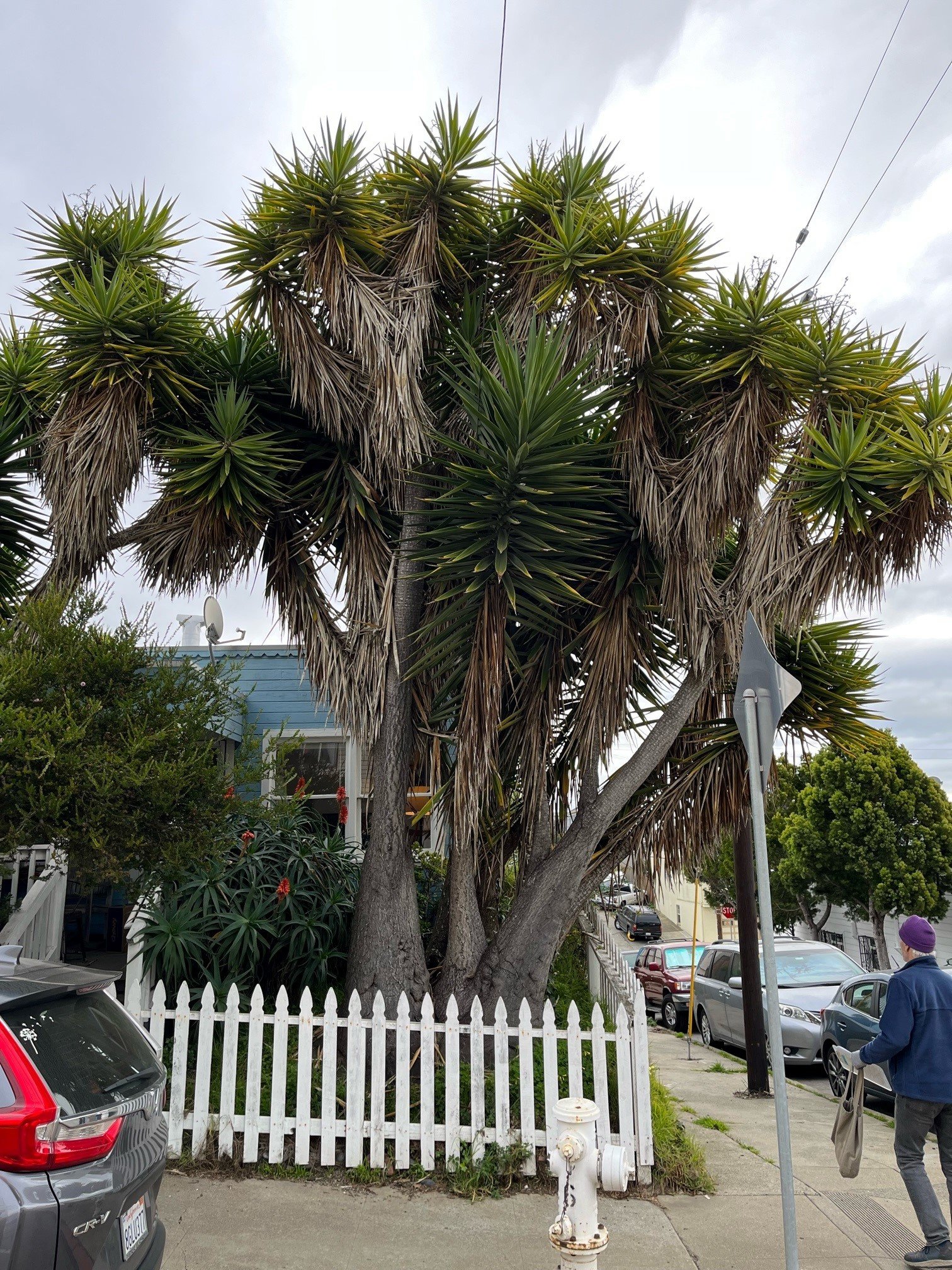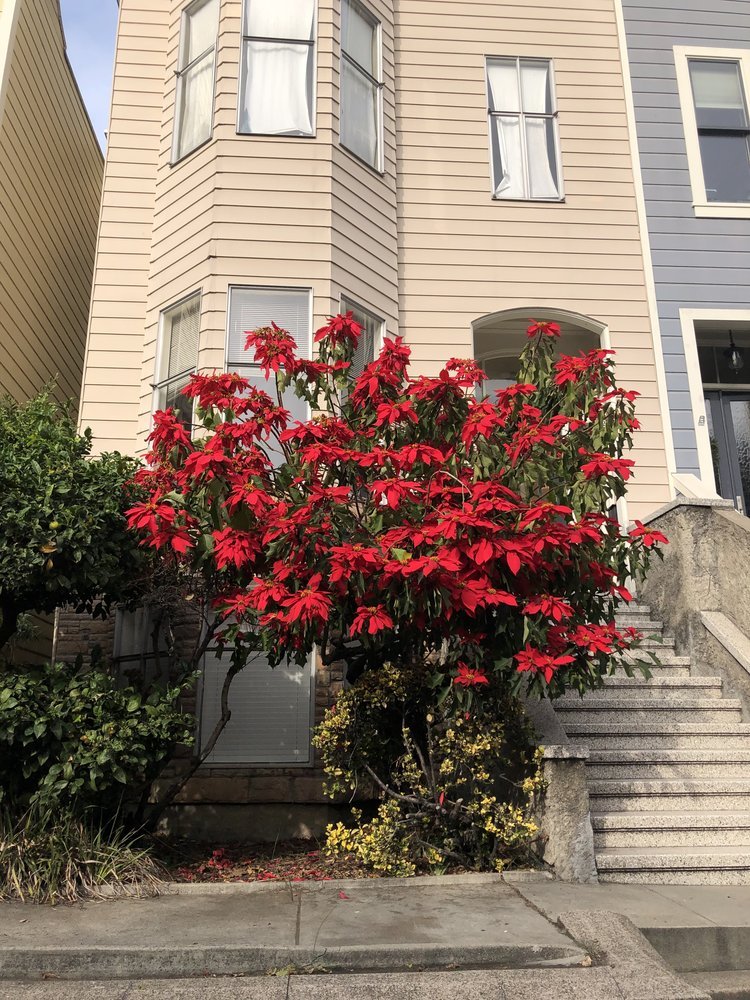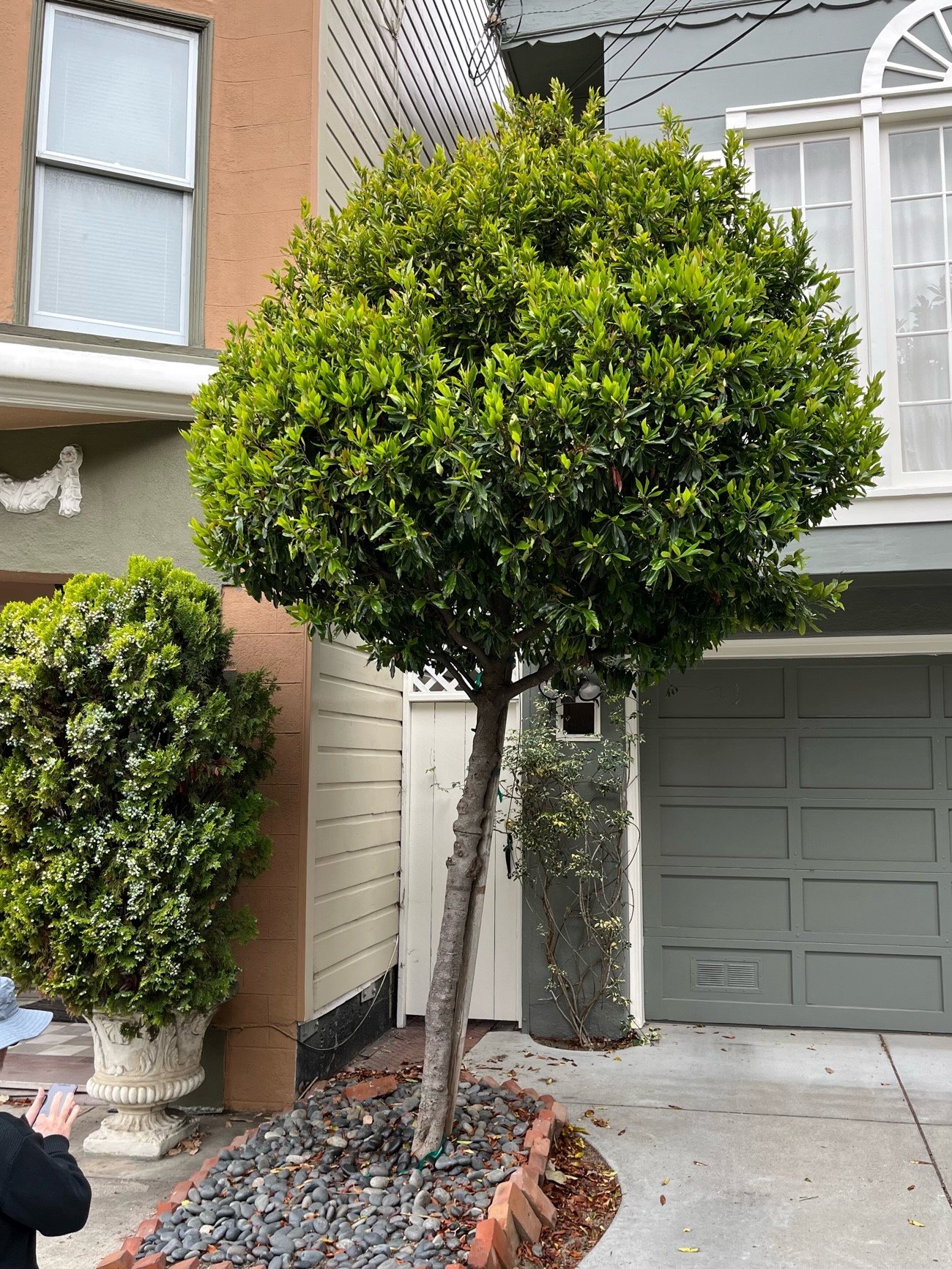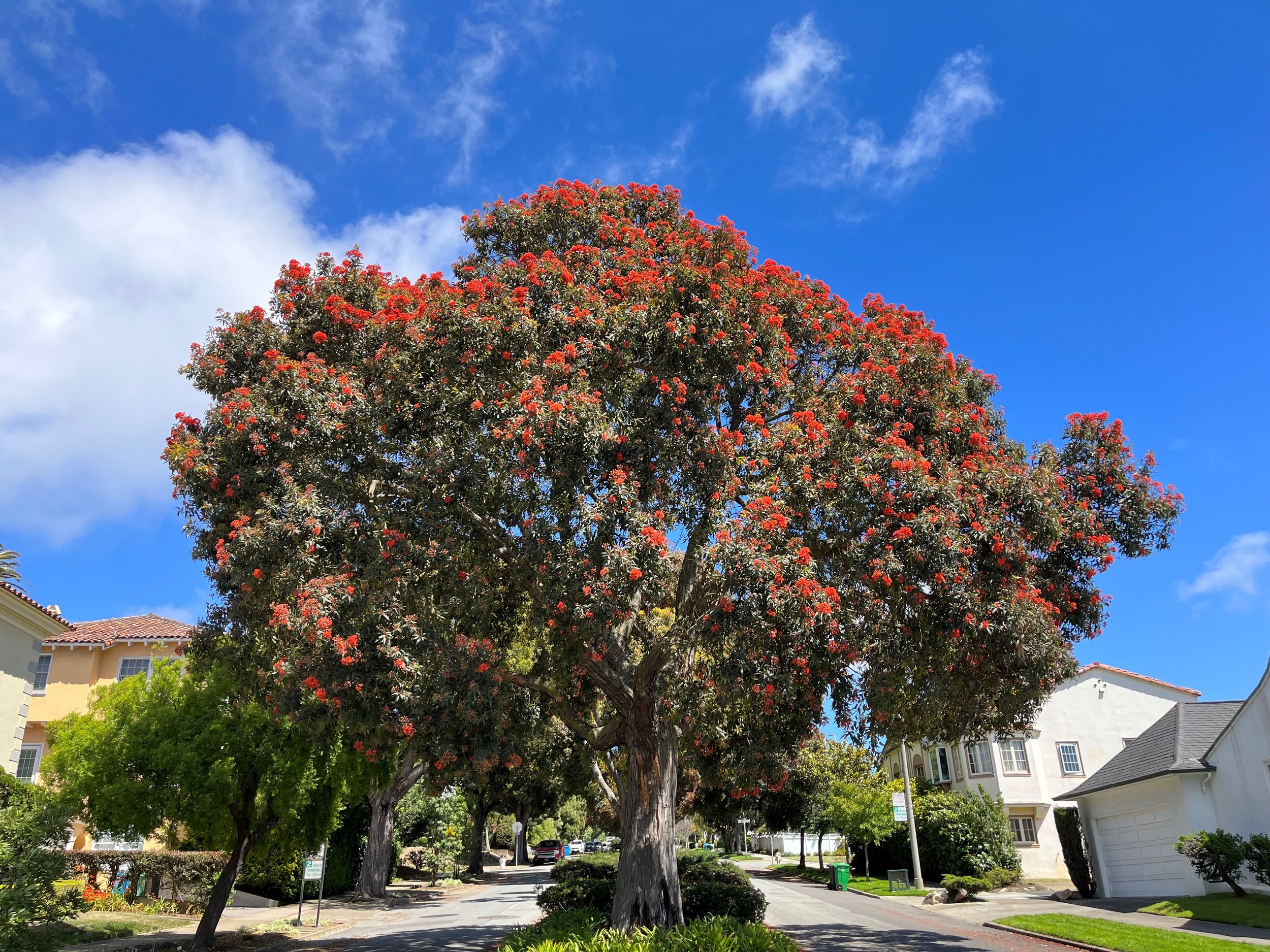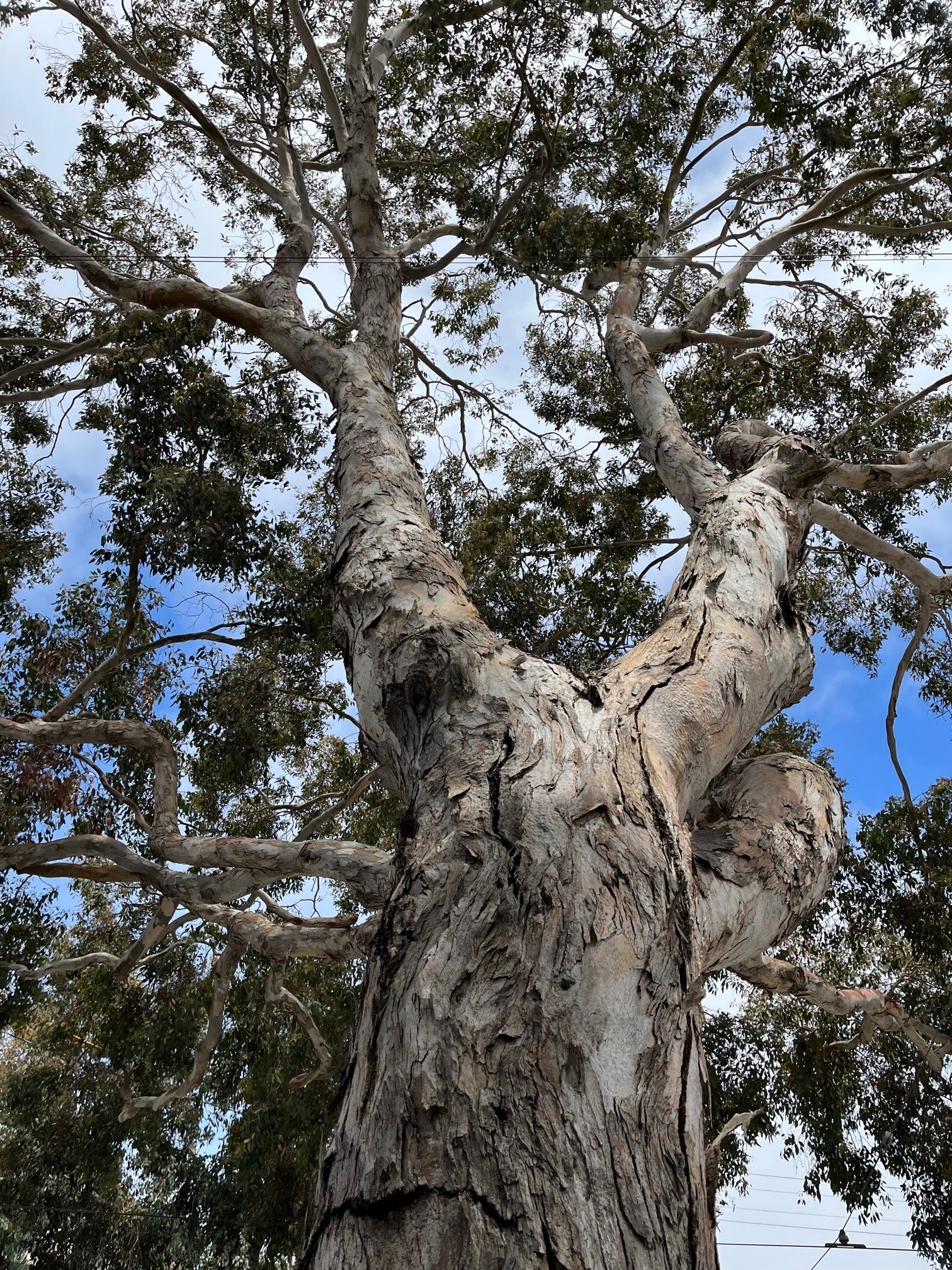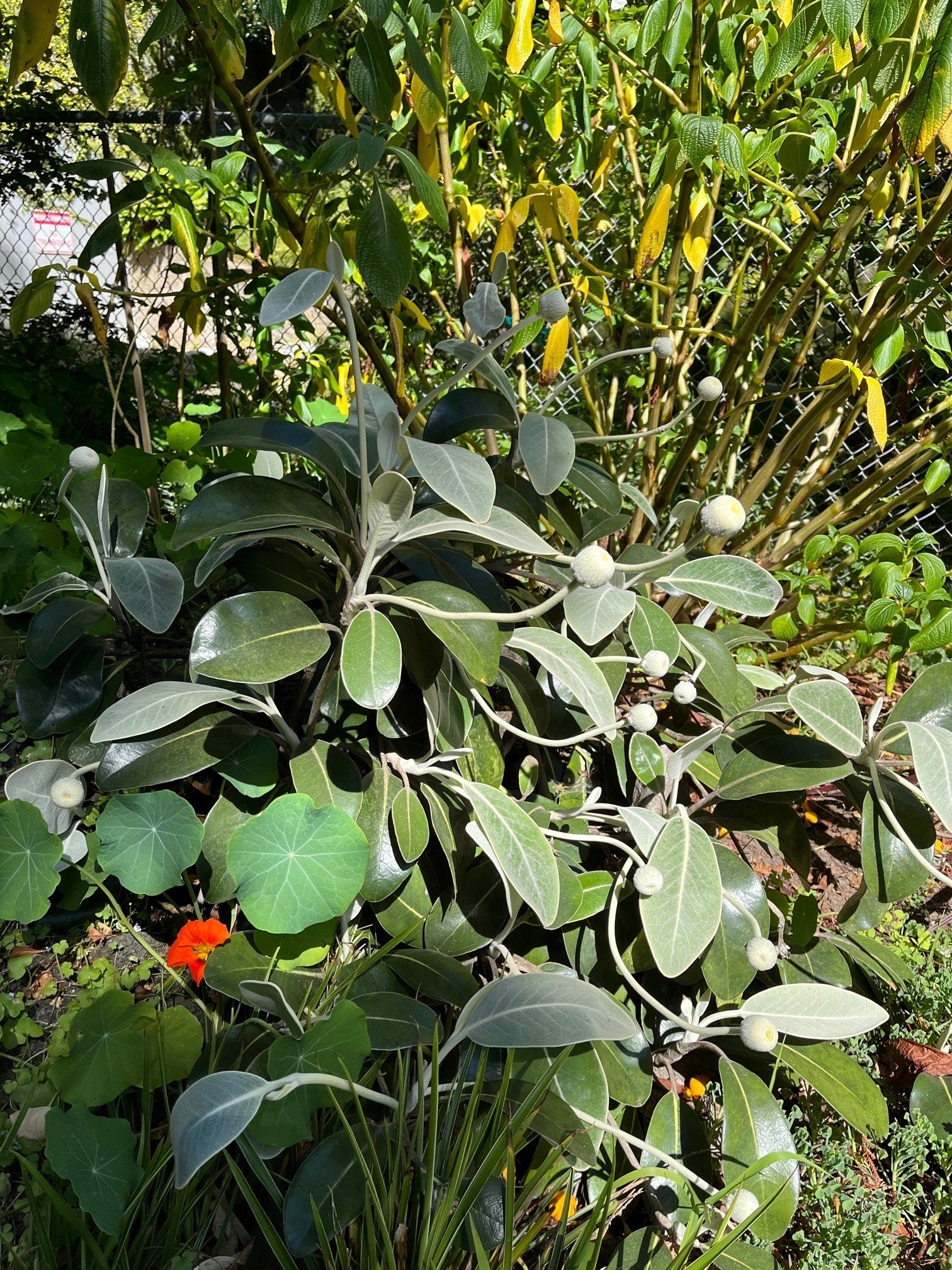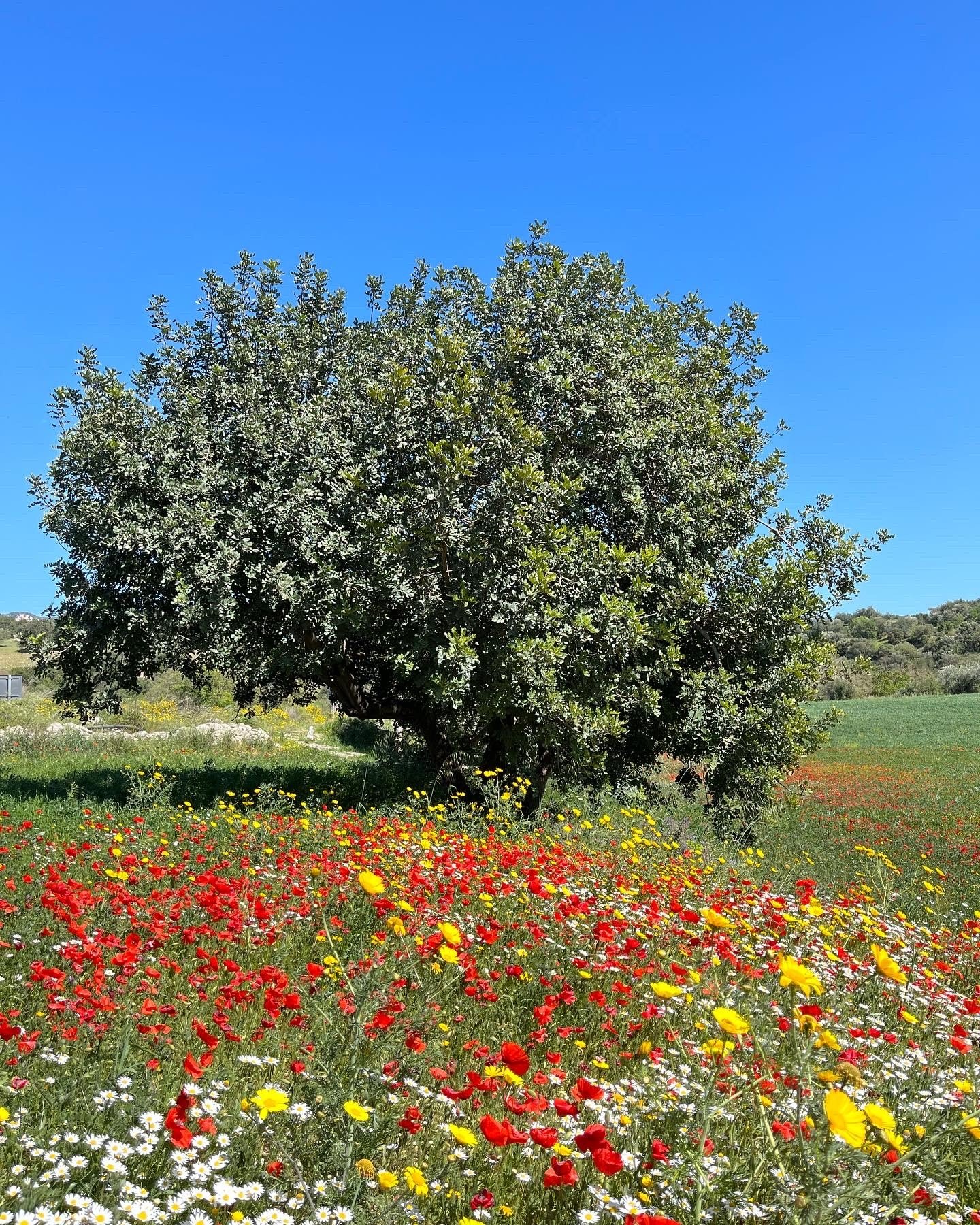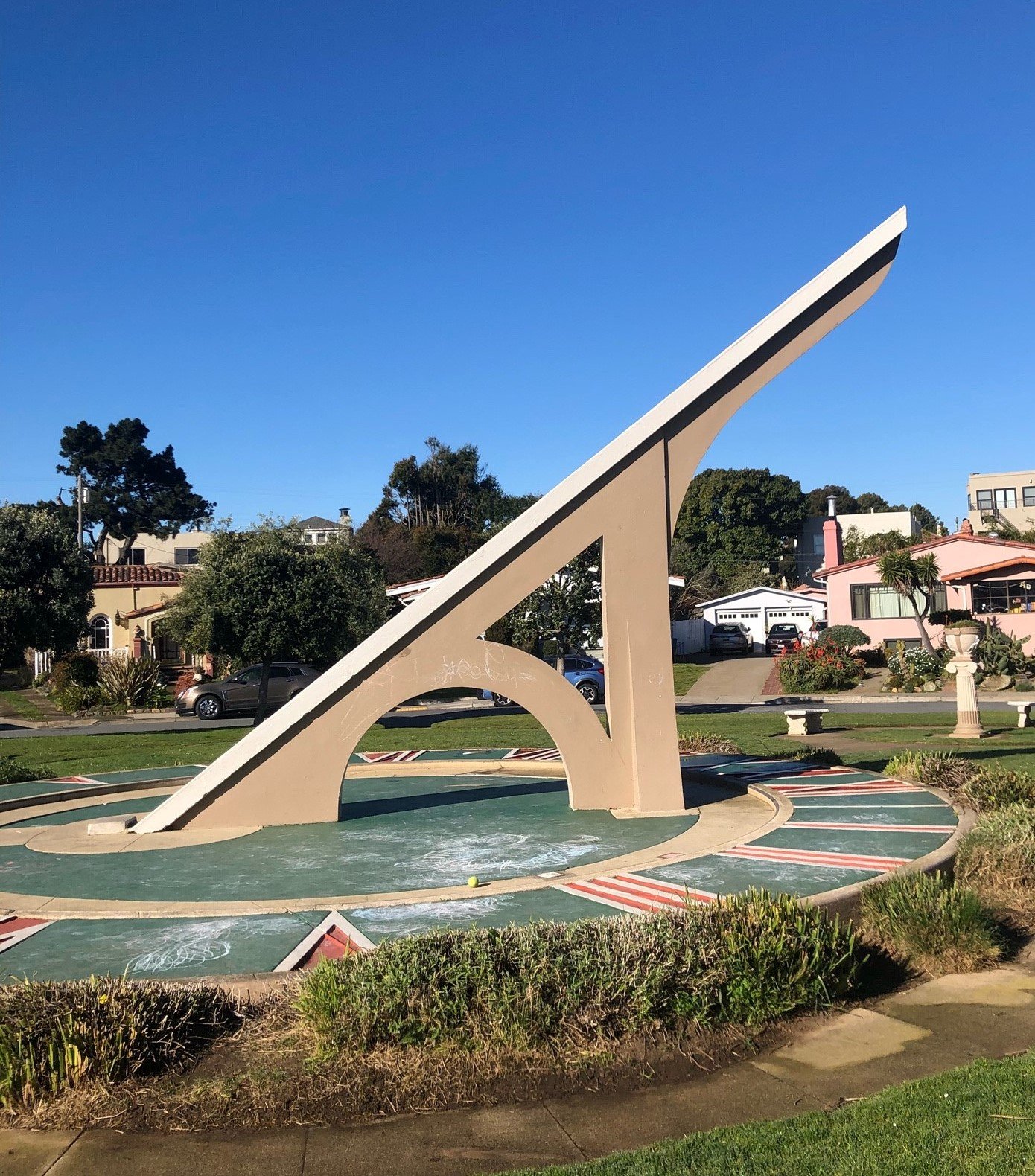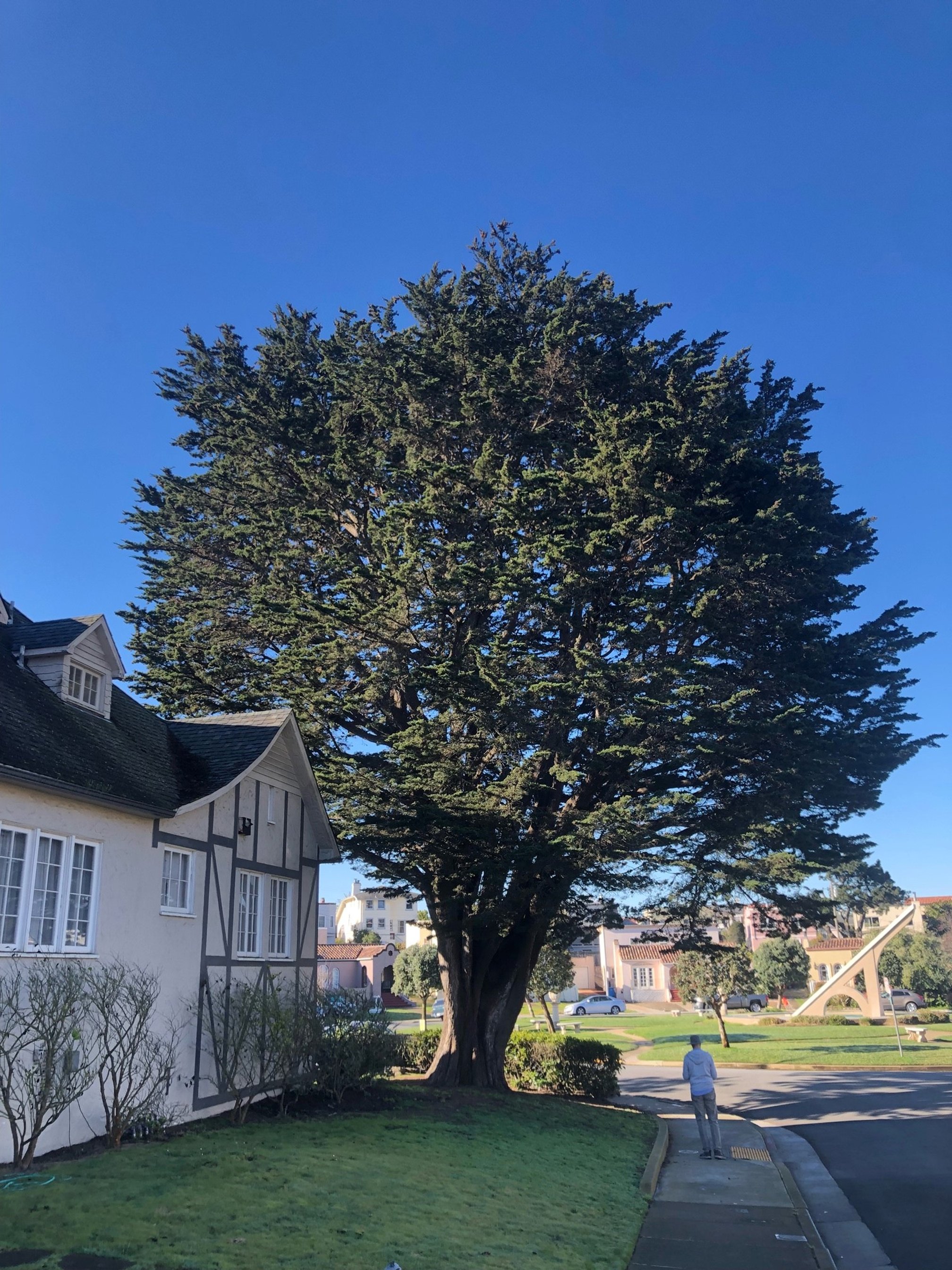Guest Post: What Trees Should We Plant in San Francisco?
[NOTE: I recently read a letter to the editor of the SF Standard by my friend Jason Dewees (horticulturalist at Flora Grubb, and author of Designing With Palms). Jason was commenting on a story in the Standard about the effect of the the winter storms on San Francisco’s tree canopy, but his letter ranged wider than that, as you will see below. I thought the letter was so brilliant that it merited a wider audience - so with Jason’s permission, here it is - text below is all Jason’s.]
The future of a thriving urban tree canopy in San Francisco lies not only in proper funding and care of trees along our streets, in our parks, and in public and private landscapes, but also in experimentation with and observation of exotic species for their adaptation to our increasingly variable, warming climate.
The native flora of San Francisco features only two tree species with significant populations: coast live oak (Quercus agrifolia) and California buckeye (Aesculus californica). Other trees were and are indigenous within the current city limits of SF, like California bay laurel (Umbellularia californica) and madrone (Arbutus menziesii), but they were few and far between. Willows that grow in moist hollows and along stream courses can also achieve the size of trees. Beyond those woodlands, the land where the city was built was largely coastal scrub, prairie, marsh, and dunescape. Any tree native to California, but not to San Francisco, would essentially be an exotic tree for the city. That would include the many Monterey pines, Monterey cypress, coast redwoods, and other California trees creating a sylvan setting in our parks and open spaces.
One of the best places to experience the extant native coast live oak woodland of San Francisco is in the northeast swath of Golden Gate Park, especially in the hollow just to the west of the Arguello Gate. Buena Vista Park also harbors fragments of native oak woodland. In the Presidio, extensive oak woodland can be seen near Lobos Creek. These are enchanting, even magical, places, with complex layers of plants, animals, birds, lichens, fungi, and countless unseen organisms. Coast live oaks live in gardens inside many city blocks, planted by scrub jays and squirrels from native mother trees. The reputation of SF's pre-European landscape as barren and treeless is overblown.
The streets of San Francisco today would be much more bare of trees were it not for the importation of exotic species from around the world. From Australia, New Zealand, South Africa, China, the Himalayas, the Mediterranean Basin, Chile, Brazil, Mexico, North America, elsewhere in California, and beyond, horticulturists and scientists have introduced trees that tolerate or thrive in our peculiar climate.
The combination of annual summer drought, cool, windy summers, mild, nearly frost-free winters, and now-erratic rainy seasons makes for unusual conditions. Our climate does not conform to expectations set by Anglo-American cultural heritage, in which summer rainfall and winter cold are viewed as the norm. Thanks to our famous fog, San Francisco enjoys year-round high humidity (comparable to Miami's, in fact), along with other coastal communities in Central and Northern California, but our position at the Golden Gate exposes us to more consistent summer winds than many other coastal California spots. Our climate is most comparable to that of Valparaíso, Chile, in its mildness and rainfall pattern.
Some plants commonly grown at our latitude, even just inland where summers are warm, do not thrive in the mild temperatures here. And many trees that thrive here fail in the frostier winters and hot, dry summers of Livermore or Sacramento. The New Zealand Christmas tree or pōhutukawa (Metrosideros excelsa) is one of the most common and successful street trees in San Francisco, but its origins on the coastal bluffs of New Zealand did not prepare it to endure the freezing temperatures and hot, dry summers inland, where it perishes within a few years of planting. Callery pears (Pyrus calleryana)—originally from China and Vietnam—planted in San Francisco fail to burst into bloom, leaf out, produce fall color, or drop their leaves on the seasonal cycle seen on their fellow-clones planted as close as San Mateo or Corte Madera. Even coast redwoods (Sequoia sempervirens), not native to San Francisco proper, suffer without irrigation in some parts of the city, and have had to be removed; wind tends to stunt their top growth in exposed areas, even when otherwise thriving.
Residents may find it surprising that species like giant sequoia (Sequoiadendron giganteum) are growing here by the score in parks and backyards, surviving in a snowless, coastal environment, or that tropical ficus species (Ficus microcarpa) that become banyans in Hawai`i are a very common (and now problematic) street tree. Similarly, it comes as a surprise to many to learn that so many palms do well in San Francisco. Among the 2500 species in the palm family are species that range from 43 degrees north latitude (the Mediterranean fan palm, Chamaerops humilis), to 44 degrees south (the nīkau, Rhopalostylis sapida), and from sea level to 11,400 elevation in the equatorial Andes, where the climate is constantly chilly and misty. The designation of the palm as singularly exotic is based on its conspicuous form; almost all the urban tree species of San Francisco are exotic—that is, not native here. Some, like those ficus, are members of plant families that do not occur in the state or our biogeographic region. This is not the case with palms, of which one species is native to the state (the California fan palm, Washingtonia filifera) and another to the California floristic province (the Guadalupe palm, Brahea edulis). To continue to experiment with “native but exotic” species (such as some of the Southern California oaks) would help us figure out what species might really thrive in this ever-changing climate. Planting an urban forest is not a one-stop deal; the forest will always require monitoring and adapting for changing times.
The future of a thriving urban tree canopy in San Francisco lies not only in proper funding and care of trees along our streets, in our parks, and in public and private landscapes, but also in experimentation with and observation of exotic species for their adaptation to our increasingly variable, warming climate and our varied soils, and tolerance of and suitability for urban life. Among the most promising new street-tree introductions include oaks exotic to San Francisco. One, native to the Channel Islands and Guadalupe Island off Southern California and Baja, is the Island oak, Quercus tomentella, a fast-growing tree with an upright form in youth, tolerance of wind, drought, and fog, and luxuriant evergreen leaves. Other oaks from Mexico, Arizona, and even Texas have been planted in local botanical gardens and parks and as street trees in other California communities and may soon begin appearing in San Francisco.
Jason Dewees

